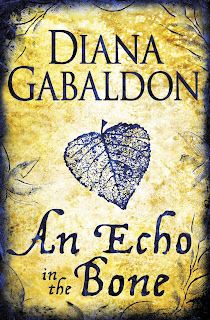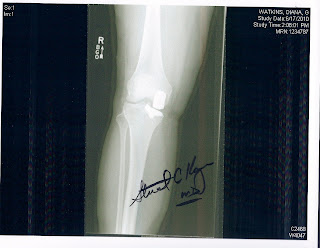In an amongst all the exciting and impending New Stuff, I mustn’t omit to note the recent publication in Germany of DER MAGISCHE STEINKREIS, which is…
Well. For starters, the book that was published in the UK as THROUGH THE STONES, and in the US as THE OUTLANDISH COMPANION, was published in Germany as DER MAGISCHE STEINKREIS. Now, personally, I dislike this title very much; it means [gag me with a spoon] “The Magic Stone Circle”. As I keep telling careless interviewers, there isn’t any magic anywhere _in_ the books, unless you want to count a little voodoo in VOYAGER. [g]
But that’s what the German publisher called it (I’m not all that mad about any of the German titles, but most of the rest aren’t awful, either).
Well, the original COMPANION/STEINKREIS has been very popular, for which I’m glad. The book was an attempt on my part to answer all the questions that people have asked me over the first ten years and four books of the series. And people have been kind enough to tell me that they’ve found it entertaining in itself, as well as a helpful adjunct to an enormous, complicated…chronicle/legend/saga/series, whatever.
Right. Now I am working on (slowly, in the interstices of Real Writing [g])the second volume of the COMPANION, but that’s nowhere near finished and won’t be for awhile. The German publisher, though, got the bright idea of updating the original volume–sort of a COMPANION 1.1, if you will.
I told them I was WAY too busy to undertake anything of the sort, but they asked Barbara Schnell, my valuable and excellent translator, if she might undertake it, with occasional suggestions and assistance from me. She very nobly did this, and the devil of a sweat it was, too, I can tell you.
I actually ended up writing synopses for THE FIERY CROSS, A BREATH OF SNOW AND ASHES, and AN ECHO IN THE BONE, which are included in this updated volume. I also gave Barbara _all_ my interview files [g], from which she culled an enormous new FAQ section. She also removed some of the material (like websites) that was obsolete, and included some of her own spectacular photography of Scotland, and me in Scotland, and so on. And we found a couple of “out-takes” from the series to include, in lieu of excerpts of upcoming books.
ANYway…that’s what it is. I know some people have been wondering–and one misguided soul has (I’m told) already put up a comment on amazon.de accusing me of “finding a new way to rip off readers.”
(Now, normally, I just don’t read amazon comments, even in English; there’s just not world enough or time. And generally speaking, I’d pay no attention to the opinion of someone who patently hasn’t looked at the book, and does not understand the concept of free choice. HOW, exactly, does one “rip off” anyone by offering anything whatever that people are free to look at and then buy or reject as they like? But I will admit to finding this a little raw.)
OK. The book _is_ available only in German. There will NOT be a version 1.1 in English–because there WILL be a _completely_ new VOLUME II in English, probably within the next year or so (this will include FC, ABOSA, ECHO, _and_ the Lord John series, plus recipes, costumes, maps, and timeines, among other things). But…we don’t want the English readers to feel left out, entirely. [g] (I may update the first volume, too, but only insofar as deleting obsolete references and maybe redoing the Glossary.)
So here’s one of the out-takes we included in DMS. From the date on the file, it was originally written for FIERY CROSS, but just didn’t really fit anywhere. This doesn’t happen often; usually a bit that doesn’t fit in one book _does_ fit into the next one (waste not, want not, you know). In this case, though, that didn’t work, both because Jemmy’s age and Roger’s knowledge of Gaelic were too advanced by the time I got to work on ABOSA. So here you go:
I could hear Jamie and Roger on the other side of the screen of bushes that divided the clearing from the creek. They were talking casually together in Gaelic as they stripped for bathing, and Brianna tilted her head toward the bushes, frowning in concentration as she listened.
“It’s a lovely language, isn’t it?” I said.
“Unique, at least,” she said, grinning as Roger repeated a phrase several times. Whatever it meant, it began with a peculiar noise that resembled nothing so much as the inadvertent exclamation of someone stepping unexpectedly on a slug. “What did he say?”
“I don’t know. I don’t think I’ve heard that one before.”
Jamie’s voice came back, sounding amused and questioning. Evidently he hadn’t heard it, either. There was a splash, a high-pitched exclamation, another splash, another exclamation, and a chorus of breathless male laughter. Bree smiled, listening.
“Do you know very much Gaelic, Mama?” She reached out a hand and deftly collared an escaping Jemmy, grabbing him under the stomach and swinging him up onto her lap.
“Here, a chuisle, let Mama wipe your face.”
“Well, I understand quite a lot by this time,” I said. “Which is occasionally very helpful indeed. I’m not sure I could _speak_ it if my life depended on it, though. I have inborn prejudices that inhibit me from making some of the necessary noises.”
In fact, I understood Jamie much better than I did Roger, when it came to Gaelic. The language appeared to have evolved somewhat over the two hundred years between them, and while the overall effect seemed quite the same to the naked ear, Jamie spoke something Roger referred to –with an academic fascination that Jamie bore fairly patiently–as “Erse.”
I had been exposed to the dialect Jamie and other Highlanders spoke for some time, now, whereas I had never heard much modern Gaelic at all.
“_Cac_,” said Roger, through his teeth. I did know that one.
So did Brianna, evidently.
“Are you all right?” she called through the bushes.
“Fine,” Roger shouted back. “Stubbed my toe on a rock. The water’s murky here.”
Jamie said something I didn’t catch, and both men laughed. The splashing grew louder, and Jemmy made urgent noises and struggled to get away, obviously wanting to go join the fun with the other boys.
“Cut it out,” Bree said firmly. “Here, look here. Look, where’s Mommy?” She held up a linen towel in front of her face, then lowered it, peeking over the top. “Peek-a-boo!”
Jemmy gave his funny deep laugh, and watched enchanted as the towel went up again.
“Boo!” Brianna appeared again suddenly. “[Where's Mommy?"]”
It occurred to me to wonder why Jamie had at once begun teaching Brianna Gaelic; he had never tried to teach me, though he would obligingly translate for me in any setting where the talk was chiefly Gael.
“Did Roger teach you any Gaelic?” I asked, curious.
Bree lowered the towel, stuck out her tongue and wiggled it at Jemmy, who went into ecstasies.
“No,” she replied, pulling up the towel again, “he doesn’t know a whole lot himself–just bits he picked up from the fishermen he used to work with in the summertimes. He says it’s a real education to talk to Da.”
“Yes, it must be,” I said, privately wondering what the hell else Jamie was teaching Roger. The two of them were up to something, that was clear enough–to me, at least–and something they thought a mnai–the women–were better off not knowing. I wondered whether Brianna was also aware of it, and whether I ought to say something.
Jamie wasn’t given to keeping secrets from me, no matter how unpleasant the news. If he was doing it now, it could only be because Roger had decided not to tell Bree.
Sloshing noises on the other side of the bushes announced the emergence of one of the men from the water. “Whoo,” said Roger under his breath, quite near to hand. Noises came like a dog shaking itself, and drops spattered on the ground as he squeezed water from his hair.
“Boo-boo-boo-boo-boo!” Brianna emerged from her towel, and tickled Jemmy into a frenzy of giggles, her long hair falling down over him as she bent forward.
Jamie said something from the creek in a mildly imperative tone that sounded like “…_seil-uisge a cnapach_.”
“Eh?” said Roger, on the other side of the bush.
“_Seil-uisge a cli\pachd_,” Jamie said, quite clearly.
“Aye?” Roger sounded questioning. “[What does cli\pachd mean?] [and] _cnapach_?”
“Cli\pachd is the floppy bit under a turkey’s chin,” I called back, seized by a desire to show off. “You know–the wattle. I don’t know what a _cnapach_ is, though.”
“A little bump or a lump, I think.” Brianna looked up, hair falling back from her flushed face. “And _seil-uisge_ is a leech, right?” She made a moue of distaste at the thought; no one shared my regard for leeches, no matter how I sang their praises.
“Oh, aye?” Roger sounded rather uncertain, as well he might. No turkeys about that I could see. “It’s a colloquialism of some kind, then? A, um, popular term that means something besides the formal meaning of the word?”
There was a moment’s silence. I could feel Jamie–who knew quite well what a colloquialism was–choosing his words carefully.
Then he spoke in English, with the clarity and diction of a BBC announcer.
“I _said_,” he repeated in slow, cultured tones, “there is a leech…on…your…cock.”
[end section]
Posted on July 18, 2010 9:37 PM
.jpg)
.jpg)
.jpg)